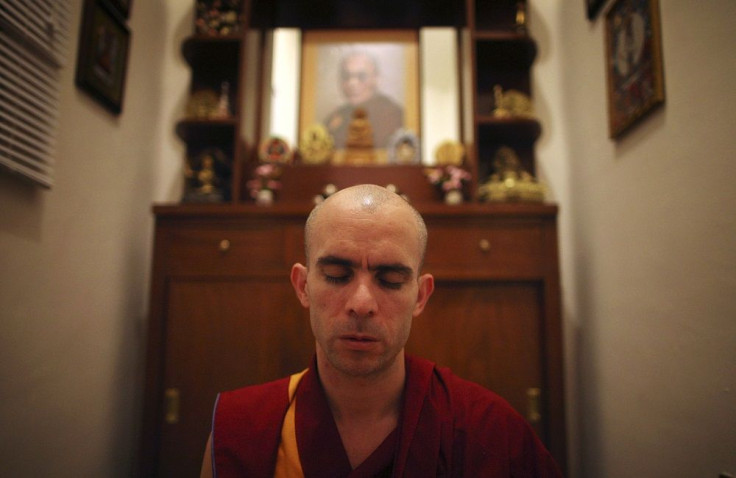Buddhist Expert Claims 2-Century-Old Mummified Monk Isn’t Dead, Only In ‘Very Deep Meditation’

Very deep meditation or dead? This is the question surrounding the body of a monk found last week in Songinokhairkhan district of Mongolia. An expert claims the monk is in a rare spiritual state which they call “tukdam.”
Being in a “tukdam” state is just a step away from being a real-life Buddha, according to the Mirror.
Quoting Dr Barry Kerzin, the physician to the Dalai Lama, the Buddhist monk said that the body of a person in that state for more than three weeks would shrink and all that would remain is his hair, nails and clothes. Most of the time, people who live near the monk see a rainbow in the sky for several days which is an indicator that the lama has found a rainbow body.
Ganhugiyn Purevbata, founder and professor of the Mongolian Institute of Buddhist Art at the Ulaanbaatar Buddhist University, described the lotus sitting position of the lama as “vajra” in which the left hand is open and the right hand symbolic of the preaching Sutra.
However, what may seem puzzling to non-Buddhists is that the monk wasn’t in that deep meditative state for only a few days or weeks or months. The lama, or a teacher of Tibetan Buddhism, was a mummy for the past 200 years.
The Telegraph reports that the mummy was brought to the Ulaanbataar National Centre of Forensic Expertise for examination. The body was covered in animal hide.
He is believed to be a teacher of the Buryat Buddhist named Dashi-Dorzho Itigilov, born in 1852 and said to have died in 1927 while meditating. The body, examined twice by Buddhist monks in 1955 and 1973, shows no signs of decay.
After the 1973 examination, the body was reburied in a coffin full of salt until it was exhumed again in 2002, three-quarters of a century after the monk’s death.
The salt in the coffin helped slow decay, said Vladislav Kozeltsev, an expert at the Centre for Biomedical Technologies, but it could also be due to a defect in the genes of the lama’s body that speed by the decomposition of human cells after a person dies. He did not rule out a secret process used in embalming the monk.
Police said the body was stolen by a man from another part of Mongolia, a cave in the Kobdsk region, who hid it in his house in the capital city and plans to sell the monk’s body for a profit. The suspect was identified as 45-year-old Enhtor.
If convicted of violating the Criminal Code of Mongolia, the suspect could be fined up to $43,000 and jailed up to 12 years.
To contact the writer, email: v.hernandez@ibtimes.com.au





















